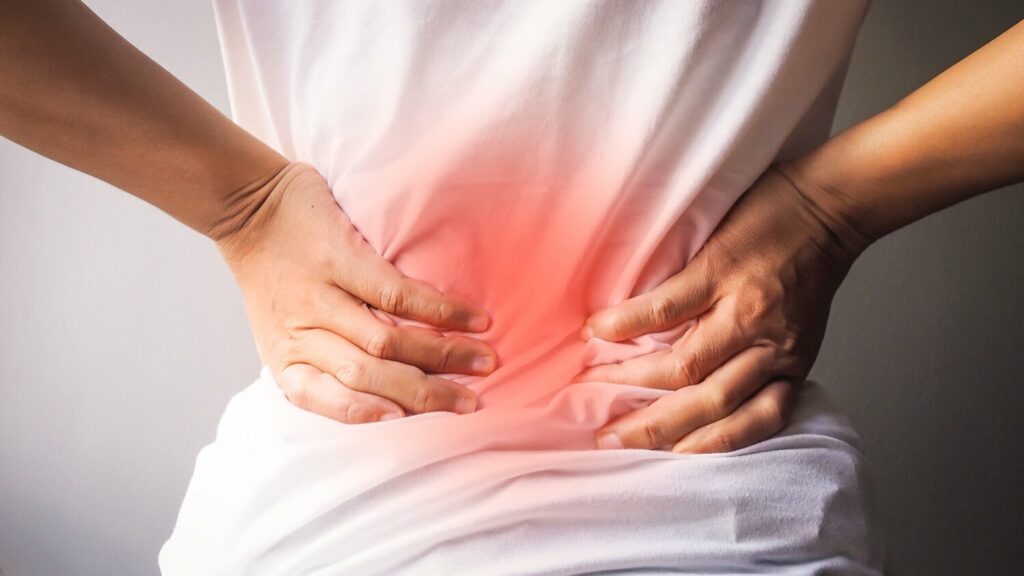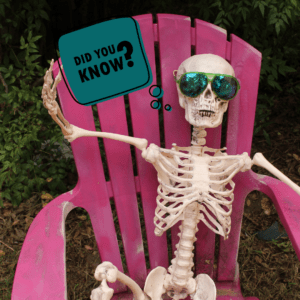This is the second part of our two-part series on back pain myths. If you haven’t already seen the first part of this series, please check out part 1 HERE. On part one you will find 5 other myths and facts about low back pain.
Myth 6:
Low back pain is usually a serious medical condition.
Fact: Thankfully, this is not the truth. Low back pain is very rarely a serious condition that needs immediate attention. Actually, low back pain is extremely common. The data suggests that 1 in 6 of us are experiencing back pain at any one stage. With at least 80% of us experiencing one episode during our life span. By no means does this suggest that your back pain is not important and/or debilitating at times, it just solely shows that the symptoms you experience are not commonly serious or require immediate attention.

Myth 7.
Low back pain will deteriorate in later life
Fact: Unfortunately, society paints a bleak picture of aging, a person that becomes frail and experiences increased pain (likely back-related). This is an extremely outdated form of thinking. Low back pain does not get worse as we age. Unfortunately, many of the older people in our lives that we have witnessed living with debilitating forms of pain were part of a generation that received forms of treatment that are not used today. Fortunately, for the likes of us and many future generations, the standard of back pain care is continually improving.
Myth 8.
Pain related to exercise and movement is always a warning that harm is being done to the spine and a signal to stop or modify activity.
Fact: Graduated exercise and movement in all directions is safe and healthy for the spine. Pain is actually not a reliable signal for tissue damage. Pain is a sensory signal that attempts to alert us of something that is potentially harmful. In many cases, it is our conscious decisions that help determine if this is the case or not.
A good example of this is when you find a cut or graze to the skin that you do not remember experiencing. When you start paying attention to this newfound information, you quite quickly make decisions based upon past experiences and current severity. Most frequently this unknown cut or graze actually becomes painful and sore.
Where this becomes more difficult is in conditions where our knowledge and experience are lacking. It becomes more difficult to make logical decisions, as our uncertainty forms a picture of many potential outcomes.
This is partly why healthcare professionals are so passionate about educating their clients, as your knowledge and understanding are a pinnacle aspect of the treatment process. More importantly, your knowledge provides a perspective that will influence how your future self manages a situation or in this case pain when exercising.

Myth 9.
Low back pain is caused by weak ‘core’ muscles and having a strong core protects against future low back pain.
Fact: The ultimate myth. Is there anything the weak core hasn’t caused?
Truth be told the core has no impact on low back pain. A weak core as we have grown to know is not normally very weak at all. This phenomenon grew as a result of correlation, rather than concrete evidence-based science. A study 25 years ago found that people with low back pain appeared to have a delayed abdominal contraction of 50 milliseconds (Yes you read that right, 50 whole milliseconds!!) Due to this one study, the weak core muscle craze occurred overnight and we are still unraveling the myth to this very day.
Fortunately, we now have an abundance of strong evidence de-mything this profound godly myth
An improvement in abdominal muscles function does not translate into a good clinical outcome in the treatment of chronic low back pain (Mannion et al., 2012; Vasselijen et.al. 2012; Wong et.al. 2014;)
Myth 10.
Pain flare-ups are a sign of tissue damage and require rest.
Fact: Pain flare-ups are actually more associated with changes in activity levels, stress, and mood rather than structural or tissue damage.
Despite what you see on the outside, changes in activity levels, stress, and mood cause systemic effects throughout the entire body. These systemic changes can lead to increased pain sensitivity.
A good rule of thumb is to acknowledge your pain, as a biological, psychological, and sociological being. Having this perspective about pain can help you understand the relationship that each part of your life has with your pain. Here are a few examples that you can use if you experience a pain flare-up:
Biological = Have you recently experienced physical trauma? Increased or decreased exercise? Started a new form of exercise?
Psychological = Low mood? Imposter syndrome? Feelings of depression? Anger that won’t shift?
Sociological = Pressures at work? Is your child not sleeping? How is your relationship with your partner? Any current financial concerns?
In addition, we can’t completely knock the benefits of rest, especially if a pain flare-up is extremely debilitating. However, rest should be used in moderation for the right reasons, rather than seen as a cure for a problem.
Moderation is key when managing a flare-up of symptoms. Moderate rest, exercise, stress, alcohol, socializing, and other factors that you identified within the list above.
Pain is complex.
We are here for you
If you’re in pain and would like to talk to us about getting some help, some specialist advice, or if you are looking for a diagnosis, remember we are always here to help you.
Appointments remain limited and we are experiencing an exceptionally high demand for our physio services since UK restrictions were lifted, so please contact us immediately to avoid a long wait.
If you would like to get one of our limited slots, please click HERE to email or CALL us on 07900603617.





